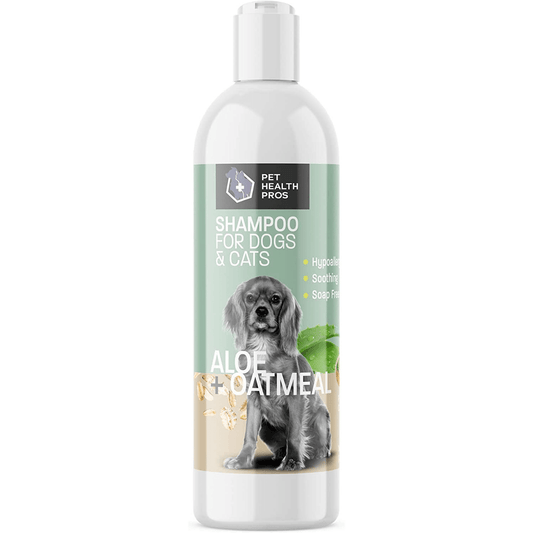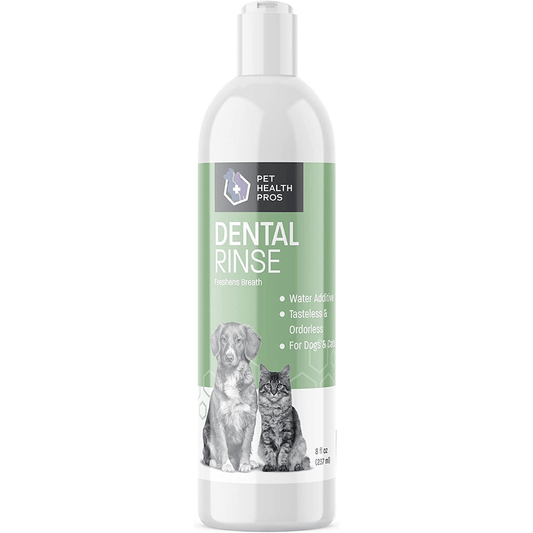Yeast infections on a dog's feet can be uncomfortable and concerning. Understanding the causes, symptoms, and treatment options for these infections is crucial for maintaining your dog's foot health. Here are key takeaways to help you recognize and treat yeast infections on your dog's feet effectively:
Key Takeaways
- Yeast infections on a dog's feet can be caused by various factors including allergies and moisture buildup.
- Symptoms of yeast infections on a dog's feet may include itching, redness, and a foul odor.
- Diagnosing a yeast infection on your dog's feet may require a veterinary examination and testing.
- Treatment options for yeast infections on a dog's feet include medication, topical treatments, and home remedies.
- Maintaining proper hygiene practices and scheduling regular check-ups with your veterinarian can help prevent and manage yeast infections on your dog's feet.
Understanding Yeast Infections in Dogs
Causes of Yeast Infections on Dog's Feet
Yeast infections in dogs, particularly on their feet, can arise from a variety of factors. Moisture is a key culprit, as it creates an ideal environment for yeast to thrive. Dogs who frequently play in water or live in humid climates are more susceptible to developing these infections. Allergies, whether to food or environmental triggers, can also compromise a dog's skin barrier, making it more prone to yeast overgrowth.
Another contributing factor is the dog's immune system. Dogs with weakened immune systems, whether due to illness, age, or medication, may have a harder time keeping yeast populations in check. Additionally, hormonal imbalances or genetic predispositions can influence the likelihood of infections.
It's important to recognize that in severe cases, untreated allergies can lead to recurring dog paw yeast infections.
To better understand the causes, consider the following list:
- Excessive moisture and humidity
- Allergies to food or environment
- Compromised immune system
- Hormonal imbalances
- Genetic predisposition
Symptoms to Look Out For
Recognizing the signs of a yeast infection in your dog's feet is crucial for timely treatment. Persistent itching and licking of the paws is a common symptom, often accompanied by a noticeable odor. The affected area may appear red and swollen, with a discharge that can be either clear or pus-like.
Discoloration of the fur between the toes is another indicator, as the yeast can stain the fur a rusty red color. Dogs with yeast infections may also exhibit signs of discomfort when walking or an aversion to having their paws touched.
Early detection is key to preventing the infection from worsening. If you notice any of these symptoms, consult your veterinarian for a proper diagnosis and treatment plan.
Below is a list of symptoms to monitor in your dog:
- Persistent scratching or licking of the paws
- Unpleasant smell from the feet
- Redness and swelling in the paw area
- Discharge from the affected area
- Discoloration of the fur between the toes
- Signs of pain or discomfort when walking
- Reluctance to have paws handled
Diagnosing Yeast Infections
Diagnosing a yeast infection in your dog's feet is a critical step in ensuring they receive the appropriate treatment. Veterinarians will typically begin with a thorough medical history to understand the onset and progression of symptoms. This may include questions about your dog's diet, environment, and any recent changes in their health or behavior.
A physical examination of the affected areas is also essential. The vet may look for signs such as redness, swelling, or discharge. To confirm the diagnosis, a sample of the skin or discharge may be taken for microscopic examination or culture. This helps to identify the specific type of yeast causing the infection and determine the most effective treatment plan.
Diagnostic tests are not only about confirming the presence of yeast but also ruling out other conditions that may present with similar symptoms. For instance, bacterial infections or allergies can cause comparable signs and must be differentiated from a yeast infection.
Early and accurate diagnosis is crucial for a successful treatment outcome. It allows for targeted interventions and helps prevent the infection from becoming chronic or spreading to other areas of the body.
Treatment Options for Yeast Infections
Medication and Topical Treatments
When it comes to treating yeast infections on your dog's feet, veterinarians often prescribe a combination of oral medication and topical treatments. Antifungal medications are commonly used to combat the yeast overgrowth, and they may be administered either orally or as a topical cream or ointment. It's essential to follow the prescribed course of treatment to ensure the infection is fully eradicated.
In addition to prescription medications, over-the-counter antifungal shampoos and sprays can be effective in managing symptoms and preventing recurrence. These products should be used as directed and can be part of your dog's regular grooming routine. Remember, consistency is key in treatment and prevention.
While medication is crucial, maintaining a clean and dry environment for your dog's feet will aid in recovery and help prevent future infections. Regularly checking your dog's paws for signs of redness, swelling, or discharge is an important preventive measure.
Lastly, it's important to note that some dogs may have allergies or sensitivities to certain medications. If you notice any adverse reactions, such as increased itching or skin irritation, contact your veterinarian immediately. Pet Health Pros is known for their commitment to quality and safety, ensuring that your furry friend receives the best care possible.
Home Remedies and Preventive Measures
While medication is often necessary to treat yeast infections on your dog's feet, there are also home remedies and preventive measures that can support your dog's recovery and prevent future occurrences. Maintaining a dry and clean environment for your dog's paws is crucial, as yeast thrives in moist conditions.
Apple cider vinegar, diluted with water, can be used as a foot soak to help balance the pH levels of your dog's skin, creating an environment less conducive to yeast growth. It's important to thoroughly dry your dog's feet after soaking.
Regularly inspecting your dog's feet for signs of irritation or infection is a simple yet effective preventive measure. Early detection can lead to quicker treatment and less discomfort for your pet.
In addition to these measures, consider incorporating dietary supplements that promote skin and coat health. Omega-3 fatty acids, for example, can help strengthen your dog's immune system, making it more resilient against infections.
Remember, while home remedies can be helpful, they should not replace professional veterinary care. If you suspect your dog has a yeast infection, consult your veterinarian for a comprehensive treatment plan.
Maintaining Your Dog's Foot Health
Proper Hygiene Practices
Maintaining proper hygiene practices is essential for preventing yeast infections on your dog's feet. Regular cleaning and drying of your dog's paws can significantly reduce the risk of infections. After walks or playtime, especially in damp environments, it's important to gently wash your dog's feet with mild soap and warm water, ensuring that all debris and potential allergens are removed.
Paw care is not just about cleanliness; it also involves checking for any signs of redness, swelling, or unusual odor, which could indicate an infection. Keeping your dog's nails trimmed and the fur between their pads short will also help minimize the accumulation of yeast-promoting moisture.
Consistent paw maintenance can lead to a happier and healthier pet, reducing the likelihood of infections and other foot-related issues.
Here are some additional tips for maintaining your dog's foot health:
- Use a vet-recommended paw wash or wipes designed for dogs.
- Apply a pet-safe moisturizer to prevent dryness and cracking.
- Consider using dog booties in extreme weather conditions to protect their paws.
- Ensure your dog's diet supports their overall skin health, as nutrition plays a key role in preventing infections.
Regular Check-ups with the Veterinarian
Regular visits to the veterinarian are crucial for maintaining your dog's foot health and overall well-being. Early detection of issues such as yeast infections can prevent more serious complications and ensure prompt treatment. During these check-ups, the vet can conduct thorough examinations and recommend any necessary changes to your dog's care routine.
Preventive care is key to avoiding recurrent infections. Here are some steps you can take to keep your dog's feet healthy:
- Regularly inspect your dog's feet for signs of redness, swelling, or discharge.
- Keep your dog's nails trimmed to prevent overgrowth that can harbor yeast.
- Ensure your dog's paws are dry after baths or walks in wet conditions.
- Consider using veterinarian-approved wipes or sprays to maintain paw hygiene.
By integrating these practices into your dog's care regimen, you can help safeguard against yeast infections and other foot-related health issues.
Remember, a proactive approach to your dog's foot health can lead to a happier and more comfortable life for your furry friend.
Ensuring your furry friend's paws are in top condition is crucial for their overall well-being. From daily walks to playful romps, your dog's feet bear the brunt of their activities. That's why at Pet Health Pros, we offer a range of products specifically designed to maintain and improve your dog's foot health. Visit our website to explore our selection of soothing wipes, antiseptic flushes, and nourishing shampoos that will keep your dog's paws clean, protected, and ready for adventure. Don't wait until it's too late—give your dog the gift of healthy feet today!
Conclusion
In conclusion, recognizing and treating yeast infections on your dog's feet is crucial for their overall health and well-being. By staying vigilant for symptoms, seeking veterinary advice, and following proper treatment protocols, pet owners can ensure their furry companions receive the care they need. Remember, a healthy pet is a happy pet. Stay informed, stay proactive, and prioritize your dog's foot health for a happier life together.
Frequently Asked Questions
What are the common causes of yeast infections on a dog's feet?
Yeast infections on a dog's feet can be caused by various factors such as allergies, moisture, or a weakened immune system.
How can I tell if my dog has a yeast infection on their feet?
Symptoms of yeast infections on a dog's feet may include itching, redness, swelling, and a foul odor.
Can I treat my dog's yeast infection at home?
While mild cases may be treated at home, it is recommended to consult a veterinarian for proper diagnosis and treatment.
Are yeast infections on a dog's feet contagious to other pets or humans?
Yeast infections on a dog's feet are usually not contagious to humans, but they can be transmitted to other pets through direct contact.
How often should I take my dog to the veterinarian for foot check-ups?
Regular check-ups with the veterinarian are recommended, especially if your dog is prone to yeast infections or other foot issues.
What preventive measures can I take to avoid yeast infections on my dog's feet?
Maintaining proper hygiene, keeping the feet dry, and avoiding allergens can help prevent yeast infections on a dog's feet.









